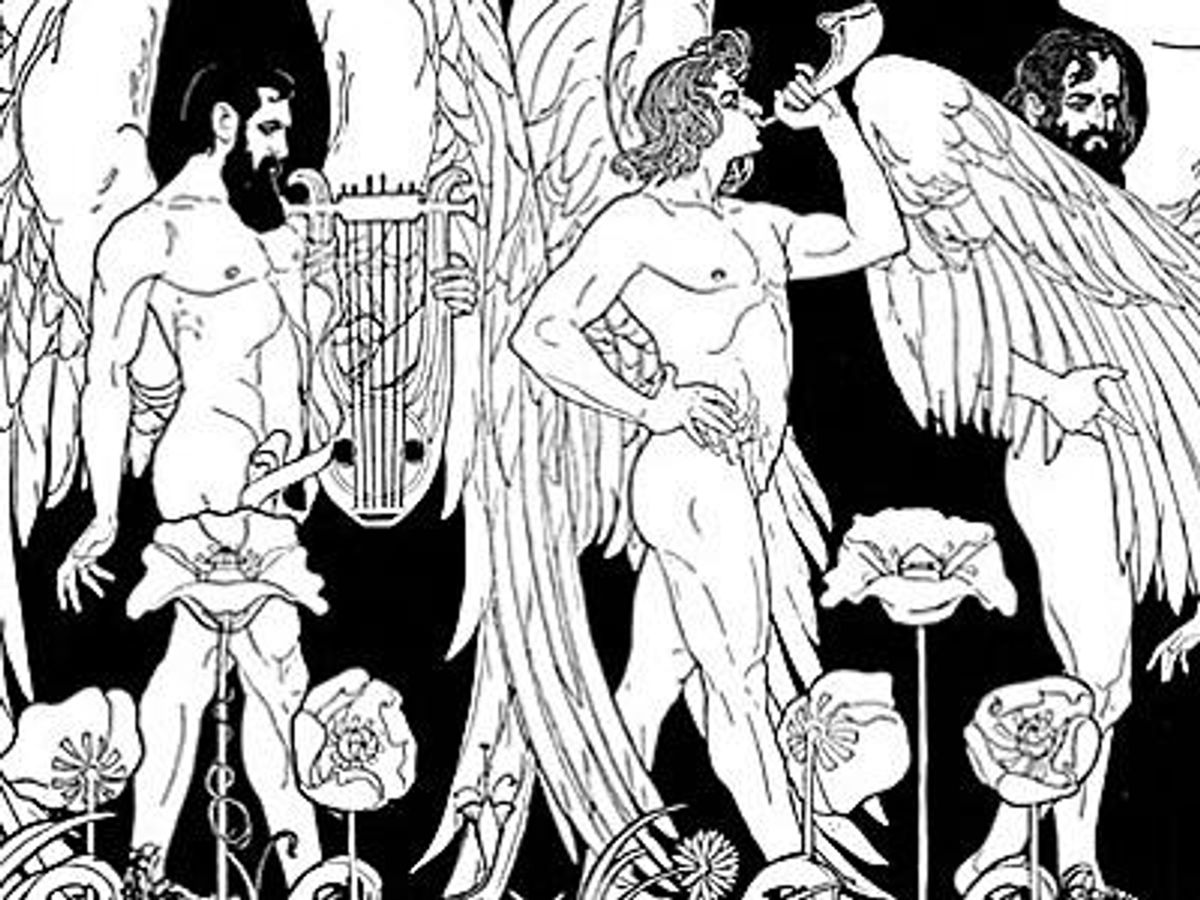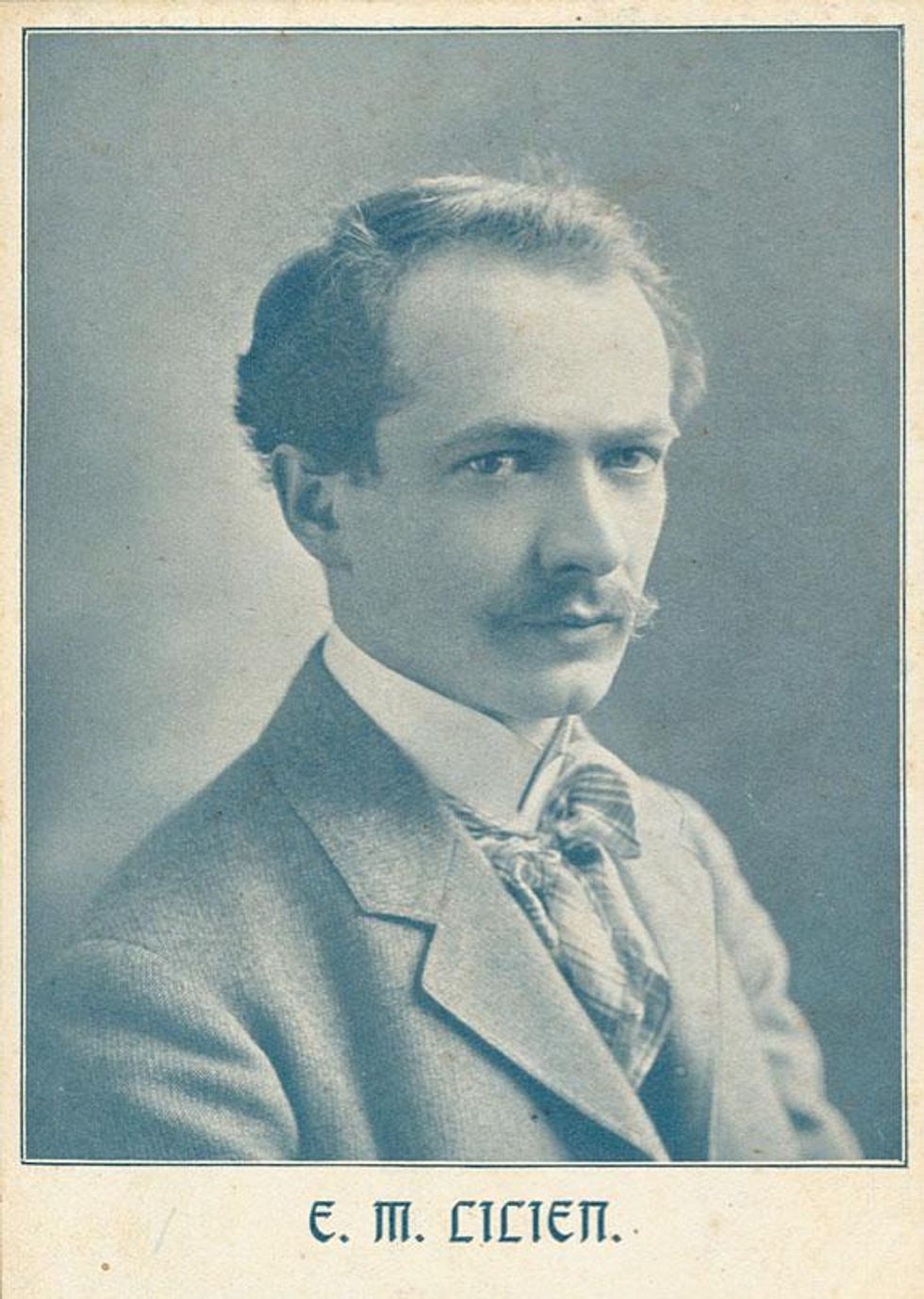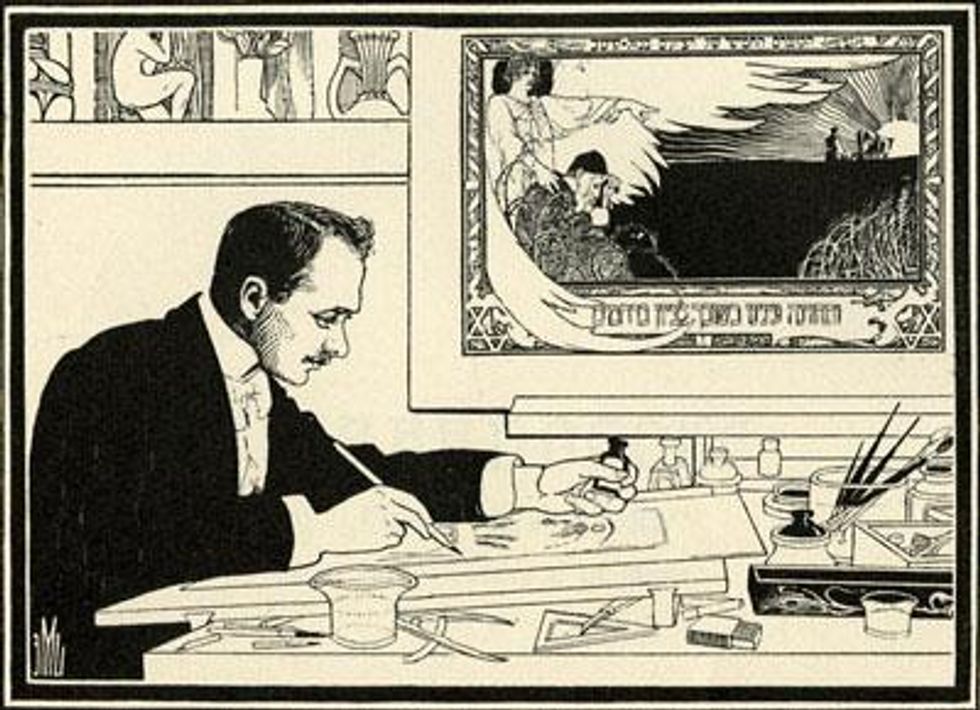
Perhaps only accidentally homoerotic, Lilien's pursuit of a handsome Jewish ideal manifested in beautiful art nouveau drawings of men.
July 06 2013 4:00 AM EST
November 17 2015 5:28 AM EST
xtyfr
By continuing to use our site, you agree to our Private Policy and Terms of Use.


Lilien was married. But his pursuit of a Jewish ideal included his famous photographs of Theodor Herzl (pictured at right), whom Lilien considered the perfect representation of the "New Jew." And we see this strong angular face over and over in his work. In 1896 he received an award for photography from the avant-garde magazine Jugend. Lilien also illustrated several books. In 1923 an exhibition of his work opened in New York.
No conclusions need be drawn. The men are strong, muscular, and mostly nude. Many of them appear on bookplate designs for friends and clients. (Traditionally, this was a printed piece of artwork that informed the reader about the ownership of the book. They were often coded as to the particular interests of the book's owner.)
Lilien introduced groundbreaking efforts in book art, which were illustrated methodically in India ink. His first endeavor was Juda (1900), a book of biblical poetry by a Christian friend, Borries Freiherr von Munchausen. It was followed by Lieder des Ghetto (Songs of the Ghetto) (1903), which contained Morris Rosenfeld's translated Yiddish poems about the suffering masses in the Diaspora. Unlike Juda, which focused on the proud ancient Hebrews, Lieder des Ghetto concerned the torment of a displaced people with hope for future redemption in the Promised Land. Although Lilien traveled to Palestine and helped found the first Jewish art institute in Jerusalem, he and his wife, Helen Magnus, an assimilated Jewish intellectual, grew increasingly absorbed in German bourgeois life and he never emigrated.
Sources: Artistic Expressions of the Jewish Renaissance and Wikipedia.
See more of Lilien's work on the following pages >>>
The Floating Clouds
A working sketch for a bookplate
A bookplate
A bookplate
Satan Appearing Before the Divine Presence
An allegorical wedding, (a working sketch for a tryptich carpet design)
An allegorical wedding, detail.
Viral post saying Republicans 'have two daddies now' has MAGA hot and bothered